Mazda CX-9 Vs Toyota Highlander Comparison

It was looking like a walk in the park. But then the wind came in.
A flash snow squall is a very real thing here in Canada. It was a clear day, one specifically chosen by Kyle and I so that we could use the break from the clouds to shoot our comparison. It was all going so well. The skies were clear, the light was good and both the 2021 Mazda CX-9 and Toyota Highlander XSE gleamed in the sun inviting us to hover around them with our lenses.
Our hopes were high for the new, sportier Highlander. After all, it comes with “sport tuned suspension.” So the next step was finding a worthy rival. Enter the 2021 Mazda CX-9 Carbon Edition (or Kuro north of the border), a darker and more luxurious version of Mazda’s three-row crossover. Add to that Mazda’s handling prowess and an almost identical price tag, and it was a comparison made in heaven. As I reveled in that reverie, the weather turned on us quite suddenly.
Get a Quote on a New Mazda CX-9 or Toyota HighlanderThe sun disappeared behind a canopy of gray and we were blasted with a snow squall I had never witnessed before. Within minutes the ground turned white, and we hurried to finish up. Maybe it was an indication from the heavens that our comparison would take a sudden turn too. Can’t say it was wrong.
Interior and Cargo Space
{"attachment_id":"856984"}
Highlander: Toyota seems to have a new-found fascination with red. In terms of the color scheme at least, the cabin on the XSE, wouldn’t look out of place on a Supra. Thankfully though, it’s not Lexus levels of red-ness. You can’t see much of the hue from the driver’s seat as the dash is entirely black while the red is mostly reserved for the seat trims. Though the faux carbon-fiber inserts feel gimmicky, Highlander features a well laid out dash like most modern Toyotas. The seats are comfortable and finished in Softex and fabric. There is also a fair amount of hard plastic in the cabin that tends to cheapen the premium feel the cabin wants to offer.
SEE ALSO: 2021 Toyota GR Supra A91 Edition Review: More Power, More Fun, More BlueThe front seats are amply spacious and comfortable but you do feel like you sit on them rather than in them. In that, it feels more like an SUV rather than a crossover. I personally prefer the more car-like perch of the Mazda but it’s a matter of personal preference. The second row offers an inch and a half more legroom than the Mazda’s 39.4 inches despite it being two whole inches longer than the Toyota. But the headroom is a different story. Technically the Highlander has a roomier second row but the roof-mounted HVAC vents protrude directly into the line of vision. It will be especially irksome for taller occupants. It also eats into the overall feeling of space in the second row.
The third row is where the Highlander really falters. It is easier to get in and out of compared to the Mazda but the legroom (29.7 vs 29.7 inches) just isn’t here. Plus, your thighs never really touch the squabs and due to the sloping roofline. It just feels cramped. Lastly, technically, you can seat three in the last row but it is only enough for two adults at best.
What is lost in third-row legroom, however, the Highlander manages to reclaim in cargo space. Despite being the smaller crossover, it offers 16 cu-ft of cargo space behind the third row and 48.4 cu-ft with the last row down.
CX-9: The CX-9 is the older of the two crossovers here and yet it stands toe to toe with the Highlander in terms of comfort. And even manages to surpass the Toyota in cabin quality and feeling of space. Where the Highlander feels premium on the inside, the Mazda feels luxurious. There is no fabric-softex mix here: leather in a Garnet Red hue adorns the seats. A lot subtler than the bright red trim of the XSE, the darker color lends the cabin an elegance that’s missing from the Highlander. Where the cabin of the Toyota is borderline ostentatious, the Mazda’s is subdued and minimalistic.
As I said before, I personally prefer the seats of the Mazda as they are more enveloping and feel like you sit in them. From the driver’s perch, you’d be hard-pressed to believe that you are at the helm of a raised crossover and not a ground-hugging sedan. It feels that snug, in the best way. Material feel and quality is possibly the best in its class and it feels noticeably softer to the touch compared to the Toyota.
The steering is absolute perfection. It strikes the perfect balance between feel, grip, and size. Although the Mazda is the bigger car, dimensionally, it is slightly tighter in the second row, not that you’d feel it at all. But the 14.4 cu-ft of cargo space with all rows up is noticeably smaller compared to the Toyota. The feeling of space in the second and third row is far superior though. However, you need to have some degree of flexibility to access the third row. Also, installing a child seat is a task and a half as well. The tether sat behind a thick wall of rubber cladding on our tester which I had to always wrestle with. By contrast, the affair is pretty straight forward in the Highlander.
SEE ALSO: 2020 Toyota Highlander First Drive ReviewBottom Line: The Highlander offers more cargo and passenger space despite being the smaller crossover. Folding the third row is also easier on the Highlander which is advantageous if you regularly fill the rear of the car. And installing a child seat is simpler too. Mazda offers a better overall feel but the fact remains that the Toyota makes much better use of its space and is as comfortable if not more. Hence, the Highlander scores the first win.
Tech and Features
Highlander: Honestly, both Kyle and I thought the XSE trim should have been better equipped. The absence of a heated steering wheel is by far the most glaring omission in the cabin. It also only offers heating for the front seats while the middle row doesn’t even get that. Then there is the old 8.0-inch infotainment system. Toyota has stuck with the Entune system which is responsive but dull looking, and infuriatingly confusing to use. Thankfully, it offers Apple CarPlay and Android Auto. The news isn’t any better for the reversing camera either. Its resolution is akin to a CRT TV from the early ’90s. And you don’t get active grid lines either.
CX-9: Well, to be honest, the Mazda’s features list isn’t awe-inspiring either. But at least there is an explanation for it. A newer 10.25-inch touchscreen will be available with the 2021 CX-9 in the US along with Mazda’s connected services. But the Canadian-spec CX-9 still sticks to the first-generation 9.0-inch infotainment screen. So that’s what we will judge it on for now. It offers both touch and dial controls but the resolution and responsiveness feel old and outdated. The resolution of the reversing camera is almost identical to that of the Highlander and no active grid lines to speak of either.
It does however offer a heated steering wheel, plus ventilated and heated seats at the front. The middle captain seats come with heating as well.
Bottom Line: On the infotainment front it’s a draw, at least in Canada, without the Mazda’s larger, more modern US-spec. But despite offering the older system, it also offers more comfort equipment and hence is the winner in this category as well.
Powertrain and Driving Feel
Highlander: Considering that the tried and tested V6 powering the Highlander makes 295 hp and 263 lb-ft of torque, it would be fair to assume that the Toyota would be a sprightly drive. That assumption would be wrong. Powerful it might be, but lively it is not. The V6 makes most of its power at the top end, so you really have to be caning it to make swift progress. And the throttle mapping and the eight-speed automatic are slow at best. The tach needle takes its own sweet time to get moving and the transmission glares at you disapprovingly from behind its newspaper every time you ask it to shift.
Shifting to Sport mode does little more than increasing the noise levels and reduce the fuel economy. The Highlander works best when left to its own devices. Remove the lead plates from the right foot, don’t make haste and the Toyota will make linear progress with its easy-going demeanor. It is a cruiser, nothing more, nothing less. A fact that its handling reaffirms.
SEE ALSO: 2021 Kia Seltos Turbo vs 2020 Mazda CX-30 ComparisonThe XSE suspension setup is soft, neutral, and clearly for comfort. Think the previous-gen Camry, just six feet tall. Inside you feel insulated and quite cut off from the surroundings. It works well for the passengers but for the driver, the disconnection feels somewhat unnerving at times. You never get a sense of where the tires are or what they’re doing.
CX-9: The way the Highlander is a typical Toyota, the CX-9 is the quintessential Mazda. It makes its power from a 2.5-liter SKYACTIV-G turbocharged four-pot. Though it makes significantly less power than the Toyota’s V6, “it demolishes the Toyota for low-down torque,” as Kyle puts it. It makes 320 lb-ft from just 2,000 rpm while you need to rev the Highlander to over 4,400 to feel the punch and again as my colleague says, “people drive torque.” Though there is a caveat here. You need to be using 91 octane fuel to get the full 250 hp 320 lb-ft combo. But even with 87 octane liquid, the torque merely drops by 10 lb-ft; the power, however, drops to 227 hp. Around town you’re unlikely to notice.
It feels sprightly and eager to drive. The steering, well-weighted, precise, and with a surprising amount of feedback, is the best in class among the cars we’ve driven so far. The ride is firm but balanced. You’d expect it to falter at low speeds due to the stiffer setup but it performs in every situation. It seems to shrink around you as you drive, even through tighter bends, which easily upset the Toyota. The Mazda stays focused and true and never feels its size. Bear in mind that, dimensionally, this is the larger car.
Bottom Line: The Highlander feels heavy and laborious in the corners. Where the Mazda shrinks around you, you feel every pound and inch of the Toyota’s heft and size. This one’s a no brainer; the CX-9 wins. The mileage for both is almost identical. According to the EPA both return 20 mpg in the city. The Toyota is marginally more efficient on the highway and returns 27 mpg compared to Mazda’s 26 mpg highway figure.
Safety
Highlander: Toyota offers its Safety Sense 2.5+ as standard across the Highlander range. It includes driver assistance features like pre-collision warning with pedestrian detection, adaptive cruise control, lane departure warning, auto high beams, and road sign assist as well. Blind-spot warning with rear cross-traffic alert is available XLE trim onwards. But in the Canadian market, it is available as standard Parking sensors though are available on the top Limited and Platinum trims only.
CX-9: Mazda offers a host of safety features as standard too. Blind-spot monitoring with rear cross-traffic alert, adaptive cruise control, pre-collision warning with pedestrian detection are all part of the standard package. The Kuro (Carbon in the US) Edition that we had for this test also came with a 360-degree camera, traffic sign recognition, and HUD, all of which are available Grand Touring trim onwards.
Bottom Line: Both the Toyota and Mazda score equally in terms of safety. Both offer different levels of equipment in the US and Canadian market depending on the safety norms but it is too close to call. As per the IIHS ratings both are Top Safety Picks so this ends in a draw.
Styling
Highlander: I think Kyle summed it up perfectly when he said “It’s shouty from just about any angle. There’s the gaping whale mouth up front, and Toyota’s turned the grille’s frown upside down above it. A prominent shoulder line links the crossover to the Supra if you’re being generous, or the Sienna if you’re not.” Given its size, I’d go with the Sienna.
We both agree that the unique and intricate 20-inch wheels look rather good and that the best viewing angle is the rear three-quarter. The sloping roofline coupled with the high-set tail lamps and a small rear window give it a sportier stance. It also looks bigger than the CX-9 despite being two inches shorter in length and an inch shorter in width.
CX-9: In direct contrast to the flamboyant Highlander, the Mazda looks quite subdued standing next to it. Yes, it’s going for the whole understated Mazda aesthetic appeal that we adore but it is a bit too simplistic. I would actually prefer if it came with bright chrome or pearl white wheels instead of the featureless black ones here.
Bottom Line: The thoughts of the author on the design are his own and are in no way intended to influence the aesthetic influences of our readers.
Pricing
Highlander: Pricing for the Highlander starts from $35,985 ($40,450). The tester we have here is the XSE priced at $44,530 ($50,590 CAD). Everything truly premium is reserved for the Platinum trim which retails for $48,140. It is the only trim that offers a panoramic sunroof and the larger 12.3-inch infotainment system.
North of the border, the Limited trim is the top dog retailing for $52,150 CAD. But a Platinum package is available for $2,300 which adds the sunroof and the larger screen to the equipment list.
CX-9: Unlike the Highlander, the CX-9 trim lineup is completely different for the two markets. Thankfully though, most trims in Canada are almost directly comparable to the ones in the US market. Our tester, the Kuro Edition is the Carbon Edition south of the border and retails for $44,080 ($52,300 CAD). A 360-degree camera is the only key difference between the two trims.
In the US market, the base Sport starts from $35,060 including destination. The GS is the base trim here and retails for $41,850. All trims in the US are available with optional AWD ($1,900 extra) except the top tier Signature trim which goes for $47,705 and only sends power to all four corners. Barring the new 100 edition trim ($55,300), the GT is the top trim in Canada and AWD is standard across the range.
Bottom Line: The CX-9 Kuro undercuts the Highlander XSE by nearly $500. Though the difference isn’t much the Mazda offers a lot more equipment for the money and a much better drive as well. Hence, it is the winner here.
Verdict: 2021 Toyota Highlander vs 2021 Mazda CX-9
As surprising as it is to announce this, it is the truth. Both Kyle and I expected the Highlander to walk away with this one. The CX-9 came out when the last generation Highlander was still around. So it’s not a new car by any measure. But despite its move to TNGA and a more butch looking body and more space in the cabin, the Highlander XSE fell short in terms of space, usability and the overall vehicle feel.
Despite a generation old infotainment system, the CX-9 offers cabin quality from a segment above, an impeccable drive, and a comfortable third row. It is also less expensive than the XSE and yet manages to offer more equipment than its rival. Keeping those facts in mind, the 2021 Mazda CX-9 is the clear winner.
Become an AutoGuide insider. Get the latest from the automotive world first by subscribing to our newsletter here.

More by Kshitij Sharma

































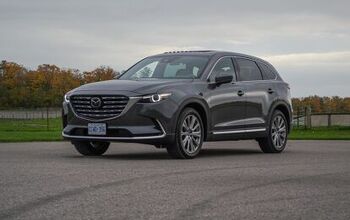
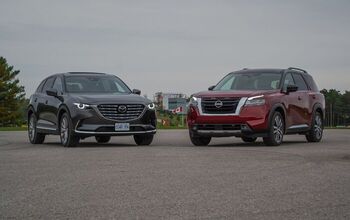
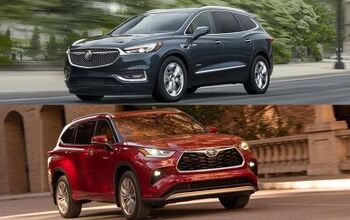
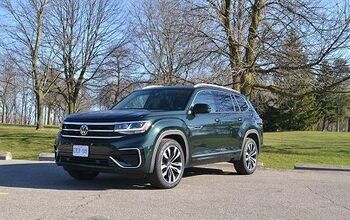





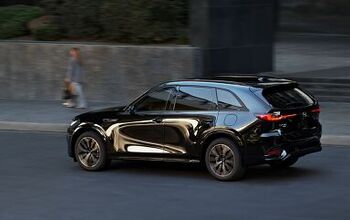
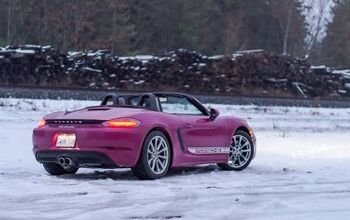
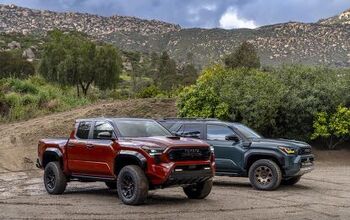
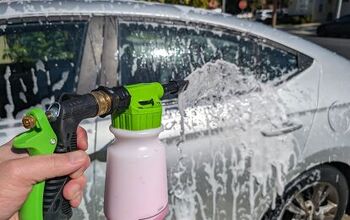
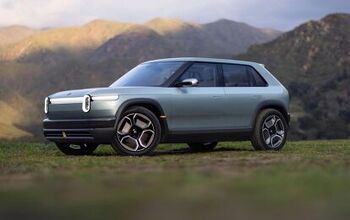
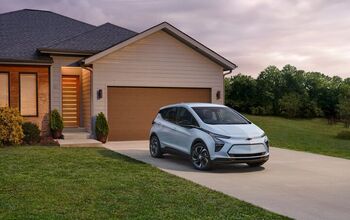
Comments
Join the conversation